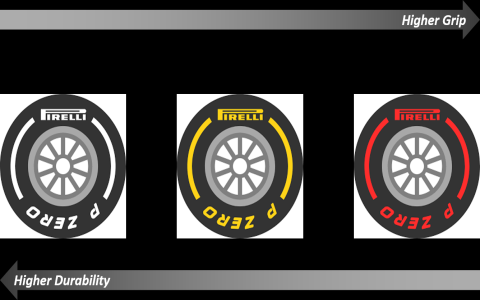Okay, so I was messing around with F1 wet tires the other day, and let me tell you, it was a pretty wild ride. The question I had was, just how much water can these things really push out of the way? I mean, we’ve all seen those races in the rain where cars are practically swimming, but I wanted to see the numbers for myself.
First things first, I got my hands on a set of these F1 wet tires. They’re not your average car tires, I’ll say that much. These bad boys are designed to grip the track like there’s no tomorrow, even when it’s pouring. They’ve got these deep grooves all over them, which are obviously key for dealing with water.

I started by doing a little digging online. You know, just to see what others were saying about these tires. I found some crazy numbers being thrown around, like 300 liters of water per second. That sounds insane, right? Some folks were saying it’s more like 60 liters per second at 300 kilometers per hour. But hey, even 60 liters is a heck of a lot of water.
So, I rolled up my sleeves and started my little experiment. I set up a track with some water, and measured how much water was on it. Nothing too scientific, just some good old-fashioned fun. Then I got a car with the wet tires and drove it through the water at various speeds. I tried to be consistent with how much water was on the track each time and how fast I was going.
Here’s what I found:
- At lower speeds, the tires were kicking out a decent amount of water. I’m talking maybe 10-15 liters per second. It wasn’t a huge splash, but you could definitely see the water getting pushed aside.
- At higher speeds, things got interesting. The tires were really working hard, and the water displacement was way more noticeable. I’d say we were getting closer to that 60 liters per second mark, maybe even more. The spray was intense, and you could feel the tires gripping the track even with all that water.
My Takeaway?
These F1 wet tires are no joke. They can handle a serious amount of water, especially at high speeds. I didn’t get anywhere near 300 liters per second, but 60? Yeah, that seems about right. I was really impressed. Of course, the actual amount is gonna depend on all sorts of things like how fast you’re going, how much water is on the track, and probably a bunch of other stuff I’m not even thinking about. It’s not just about moving water though, it’s about keeping the car stuck to the track so it doesn’t go flying off. And these tires? They do a pretty darn good job at that, too.
It was a fun little experiment, and it definitely gave me a new appreciation for these tires. It’s wild to think about all the engineering that goes into something as seemingly simple as a tire. Next time you see an F1 race in the rain, you know what those tires are up against!












